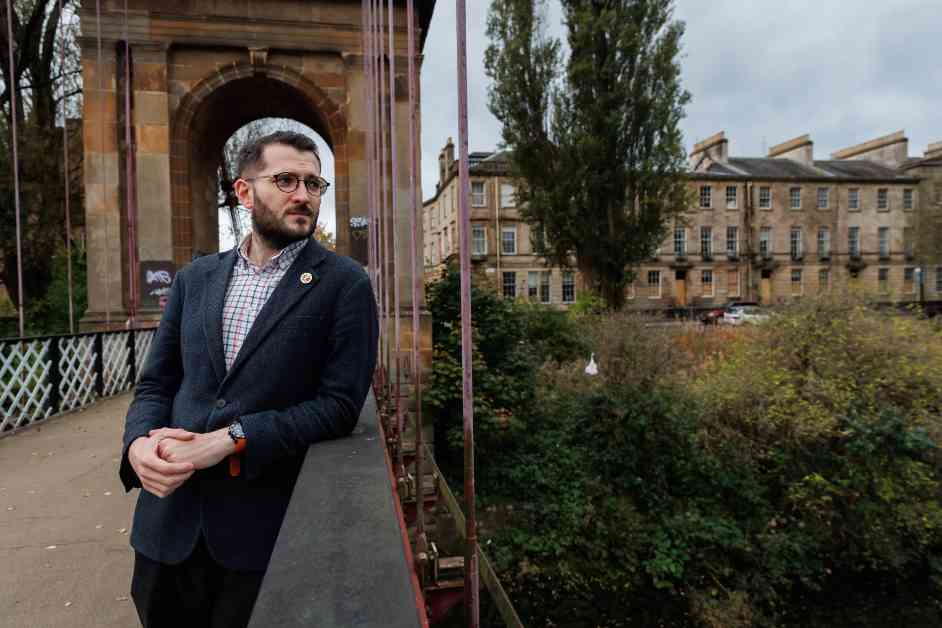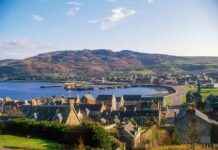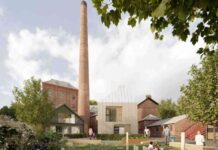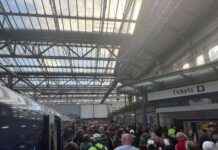The fading light of an early autumn evening provides an apt allegory for my urban safari around Glasgow’s undead buildings. The recently-updated Buildings at Risk Register for Scotland lists 143 of these old architectural jewels, by far the most of any Scottish city.
Their presence on this inventory, together with their listed status, provides a measure of hope that one day they might all be restored to life. For the moment, though, Glasgow’s serpentine and gaseous planning regulations are holding many in cryogenic suspension.
Beyond the gaze of the population a grim race to the death is proceeding between those who want to preserve at least some semblance of their grandeur and those who would cheerfully knock them down at a moment’s notice. There are vast financial rewards if you can take ownership of one of these buildings; demolish it and throw up a brick shoebox in its place. Their fate – like so many before them – is often sealed on a golf course or in the hospitality boxes of Parkhead and Ibrox.
Last month, time eventually ran out for the O2/ABC Cinema on Sauchiehall Street which had been severely damaged in the Glasgow Art School fires. Built in 1875, surely, at least, its gorgeous frontage could be saved, even if the rest of it had to be turned into student accommodation. The owners, though, disagree that the arch can be saved and have lost little time in demolishing this city centre diadem. This week the wrecking-crews moved in.
Glasgow Labour MSP Paul Sweeney has made it his life’s mission to highlight the threat to the city’s glorious old built infrastructure and to preserve as much of it as possible. His expertise in securing preservation orders on some old buildings have made him an enemy of some who would rather demolish them and feed on the proceeds.
He is my tour guide for this walk amongst Glasgow’s architectural tombstones. We start at the site of the ABC cinema which he feels is being unnecessarily demolished. “I’ve got one of Scotland’s top structural engineers who deals with historic buildings. He made an assessment of it for the owners of The Campus Bar beside it as they were in dispute with the ABC building’s owners.
“The engineer said it was structurally sound. The tin roof is quite lightweight, while the concrete dance floor and the façade are both fine. It could easily have been rebuilt. Why were they so desperate to be rid of it?
“Was it because you can get more money if you turn it into student accommodation? The Art School fire complicated matters, of course. If you can pick up the insurance money and top-dollar for student flats, then why should the owner give a toss about the architecture?”
The historian Frank Worsdall’s important 1981 book, The City That Disappeared, read like a gazetteer of Glasgow’s lost architectural heritage. He describes 1971 as the city’s ‘black year’.
“In that single year,” says Paul Sweeney, “10,000 houses were demolished in the city. Overall, Glasgow knocked down 100,000 houses. And that didn’t include all the commercial buildings. You could produce an updated volume on what’s happened in the half century since.
‘The Art School fire complicated matters’ (Image: free) “The city has shrunk by at least a quarter. It’s the only city in the world apart from Detroit whose population had once passed one million before shrinking back below that level. As people left, there were all these schools, libraries and other public buildings left behind, many of them were magnificent. It got to the stage where simply weren’t enough people living above the shops to sustain them.
“Glasgow has become a doughnut city. Only about 20% of Glasgow’s bars and restaurants are open after midnight. In Edinburgh it’s twice that. Edinburgh has people living in the middle of the city. In Glasgow people can’t even get a bus or train late at night, so people are further deterred from being here. Increasingly, planners are using a set of loose guidelines for the city’s development to over-interrogate some decent private-sector proposals.”
The consequences can be catastrophic. A building can get to a point of disrepair where there is no option but to demolish it. We reach the old College Building at Cathedral Street. This had been opened by Harold Wilson on the same day that Langside College and Barmulloch College opened.
“They were very much of their time,” says Mr Sweeney, “it was the ‘white heat of technology’ era. When the new college building was built there was no succession plan about how that old college building could be used. It was just dumped. It’s a listed building, but it’s been rotting up there for years.
“Where’s the obligation by public authorities to make sure that buildings they’re leaving are taken care of? Look at Stobhill Hospital and Ruchill Hospital, where all that’s left is the water tower. Then there’s the old listed Gartnavel Royal. The reason why that can’t be developed apparently is because there’s no access road. Could the city not convene anything to punch through some of these blockages? There’s no real overarching effort.”
The Alexander ‘Greek’ Thomson Church at the west end of St Vincent Street in Glasgow (Image: free) We pass Moss Bros on Renfield Street and look up at all the empty floors above it. There are enough empty floors above these city centre shops to fill the Empire State building.
And then we arrive at the most glorious of all Glasgow’s jeopardised buildings: the Alexander ‘Greek’ Thomson Church stark and magnificent at the west end of St Vincent Street. Until recently, there had been a congregation there before a piece of plaster fell from the ceiling and caused them to leave.
“It’s been consumed by foliage and undergrowth,” says Mr Sweeney. “The pillars are now covered by netting. Internally, it’s even become difficult to erect scaffolding in the sanctuary as the weighting on the floor isn’t strong enough.”
We’re both thinking the same thing: what’s the city doing about this beautiful building? Before long it will be beyond all repair and salvation.
On the other side of the road, there’s St Columba’s Gaelic Church. Here though, there is some hope. It’s one of several old stone masterpieces around the city that have been bought by Bradley Mitchell, a local builder who, according to Mr Sweeney, “gets his boys in to sort it out and salvage it and make something of it”. The possibilities are endless: a traditional music venue perhaps or small, affordable studios for Glasgow’s vibrant community of young creatives.
We get to the bleak Scottish Power renewables building that’s been allowed to contaminate the skyline at the foot of St Vincent Street. It’s a lumpen, charmless, featureless excrescence and you wonder why it’s been allowed house-room amidst such wonderful old architecture. Soon, it will be joined by Scotland’s tallest building which (you’ve guessed it) will house more students.
We’ve reached Govan and we’re admiring the smart and eye-catching livery that decorates some of the old shopfronts: a cheap, cheerful and effective method of conferring a measure of elegance. It brightens the whole street up.
Have you spent some time in Govan recently? This place has always been blessed by architectural magnificence. Over there is the art deco curved glass and brick façade of the old category-B listed Govan Lyceum, built in 1938. It’s been derelict for 18 years but is not beyond saving and being re-purposed perhaps as an events venue. Could the traffic from the new Govan to Partick Bridge provide some future viability?
The interior of the Fairfield Heritage museum of shipbuilding in Govan (Image: Colin Mearns) We’re standing in the middle of what should really be a world heritage site. At its centre would be the sprawling Govan Fairfield shipbuilding site. The museum alone, an under-rated gem, makes it worth visiting. This place was the first anywhere in the world where they brought marine engineering and shipbuilding together, a testament to the genius of John Elder and William Pearce. It literally changed the world and its economy. Wars were won and lost because of what happened here from the 19th century and well into the 20th. Nations were made on the back of the genius in these vast halls.
“We don’t celebrate this enough,” says Mr Sweeney. “This is where they cracked what could be achieved by that union of engineering and shipbuilding. They’d started building engines and then thought: why don’t we build the ships too? A building like this is just radiating confidence and genius.”
Bradley Mitchell has bought this old building too and he and “his boys” plan to turn it into artists’ studios. “When the right people with the right heart want to do the right thing,” says Mr Sweeney, “good things can happen with our old buildings. But there’s only one Heritage Officer left at Glasgow City Council and she’s run off her feet. The council was once the largest employer of architects. Now it has none.”
Tomorrow: A tour of Laurieston, Gorbals and Carlton Place; why the UK Treasury is
pre-disposed to knocking down old buildings and how planners are thwarting new ways to revive them.
































